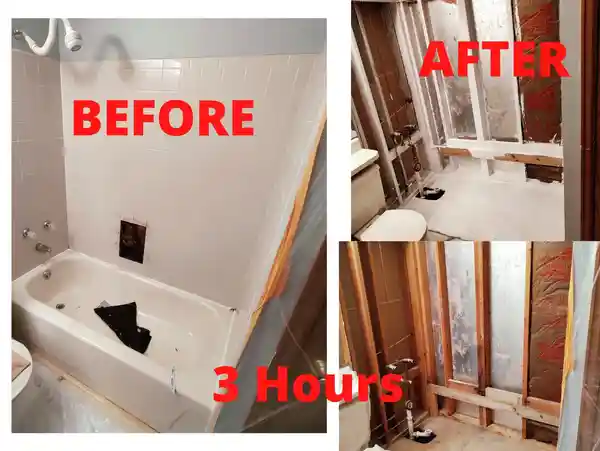Cleaning and remediation services play a crucial role in maintaining health, safety, and well-being, particularly after incidents such as floods, fires, mold Compassionate biohazard remediation for seniors, or hazardous waste spills. These services ensure that both residential and commercial properties are thoroughly cleaned, decontaminated, and restored to their original condition, preventing further damage and ensuring safety for occupants.
What Are Cleaning and Remediation Services?
Cleaning and remediation services encompass a wide range of tasks, from routine cleaning to specialized operations that involve the removal of hazardous materials, mold, water damage, and biohazardous waste. Remediation refers specifically to the process of correcting, fixing, or mitigating damage caused by harmful substances or contaminants.
Some key areas of focus for cleaning and remediation services include:
- Water Damage Restoration
- Fire and Smoke Damage Cleanup
- Mold Remediation
- Hazardous Waste Removal
- Biohazard Cleanup
- Asbestos and Lead Removal
Each of these services requires expertise, specialized equipment, and adherence to regulatory guidelines to ensure proper cleaning and safe disposal of dangerous materials.
Types of Cleaning and Remediation Services
- Water Damage Restoration: Water damage can result from natural disasters like floods or from internal issues such as burst pipes or leaks. Water damage restoration services involve removing excess water, drying out the affected areas, dehumidification, mold prevention, and restoring damaged structures. If not treated promptly, water damage can lead to mold growth and structural issues.
- Fire and Smoke Damage Cleanup: Fires cause both direct damage to property and secondary damage through smoke and soot. Cleaning and remediation services in this category involve removing debris, cleaning affected surfaces, deodorizing spaces, and repairing structural damage. Smoke residue can permeate walls, fabrics, and HVAC systems, making thorough cleaning essential.
- Mold Remediation: Mold can develop in damp, humid environments and poses health risks, especially to those with respiratory issues. Mold remediation services focus on identifying the source of moisture, removing mold colonies, disinfecting affected areas, and ensuring that moisture levels are controlled to prevent future outbreaks.
- Hazardous Waste Removal: Hazardous waste, whether from industrial accidents, chemical spills, or improperly stored materials, requires professional remediation to ensure that it is safely disposed of. Specialists handle the collection, transportation, and disposal of toxic substances, following strict regulatory protocols to prevent harm to people and the environment.
- Biohazard Cleanup: Biohazard cleanup services address situations where there are biological contaminants, such as blood, bodily fluids, or infectious materials, that pose a risk of disease transmission. Crime scenes, traumatic accidents, or infectious disease outbreaks often require biohazard remediation. This service ensures that the area is sanitized, disinfected, and safe for reoccupation.
- Asbestos and Lead Removal: Many older buildings contain asbestos and lead-based materials, both of which can be hazardous to health. Asbestos, often found in insulation, can cause lung disease if disturbed, while lead exposure from old paint can lead to serious health issues, particularly in children. Specialized remediation professionals safely remove and dispose of these hazardous materials in accordance with safety regulations.
Why Are Cleaning and Remediation Services Important?
- Health and Safety: Unaddressed contaminants such as mold, asbestos, or biohazards can pose significant health risks, leading to respiratory problems, allergic reactions, and long-term illnesses. Cleaning and remediation services ensure that these threats are removed and that the environment is safe for occupants.
- Preventing Further Damage: When incidents like water leaks, fires, or mold growth occur, immediate action is essential. The longer these issues persist, the more severe the damage becomes. Remediation services stop further degradation and restore structures before they become irreparable.
- Regulatory Compliance: Many remediation services are governed by strict environmental and safety regulations. For example, the handling and disposal of hazardous materials require adherence to federal, state, and local laws. Professional remediation companies are equipped to follow these regulations, ensuring that legal obligations are met and fines or liabilities are avoided.
- Protecting Property Value: A property’s value can quickly diminish if it is left with unresolved damage. Water stains, fire damage, or lingering mold can deter potential buyers or tenants. Cleaning and remediation services help restore properties to their original state, preserving or even enhancing their market value.
The Process of Remediation Services
The process for cleaning and remediation typically involves several key steps:
- Assessment and Inspection: Professionals begin by assessing the scope of damage or contamination, identifying the source of the problem, and developing a remediation plan. This initial assessment is critical to determining the proper course of action.
- Containment: In many cases, containment measures are necessary to prevent the spread of contaminants. For example, mold spores can travel through air, while hazardous waste may leach into the environment if not properly contained.
- Removal and Disposal: The next step involves removing the contaminants, damaged materials, or hazardous substances. This can include water extraction, debris removal, or chemical clean-up. Proper disposal methods are employed to ensure that contaminants are not released back into the environment.
- Cleaning and Sanitizing: After the removal process, surfaces are cleaned, disinfected, and sanitized. This step ensures that all harmful residues are eliminated and that the area is safe for habitation.
- Restoration and Repair: Depending on the severity of the damage, structural repairs or restorations may be required. This could include replacing drywall, carpeting, or other materials that were damaged during the incident.
- Prevention: Finally, remediation services often include preventative measures to reduce the risk of future damage or contamination. This could involve installing dehumidifiers, sealing cracks, or implementing routine inspections.
Conclusion
Cleaning and remediation services are essential for restoring environments affected by disasters, contamination, or hazardous materials. These services ensure the health and safety of occupants while preserving the integrity and value of the property. By employing specialized techniques and adhering to strict regulatory standards, professional cleaning and remediation companies help restore order, safety, and peace of mind in the face of challenging situations.
